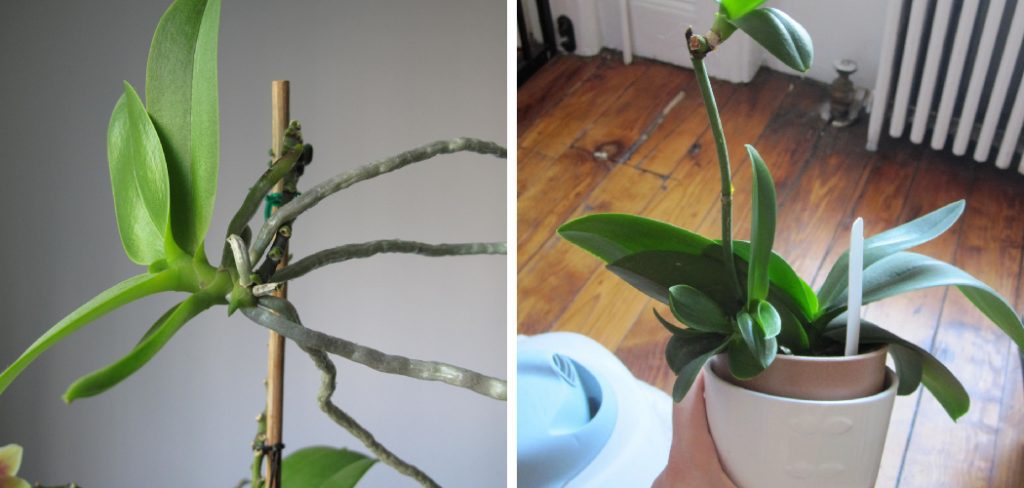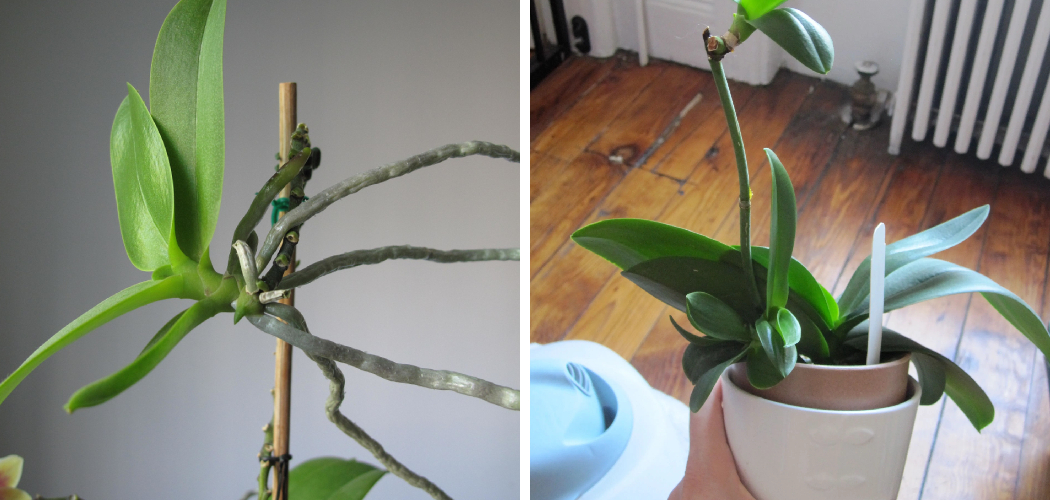To cut keiki from orchid, use sterilized shears to remove the keiki from the mother plant. Orchids commonly produce keikis, or baby plants, that can be separated from the parent plant to promote growth.
Cutting keikis is done by carefully removing them from the mother plant using sterilized shears. This process helps the parent plant concentrate energy on its own growth and encourages the keiki to develop into a new individual orchid. With the right technique and care, you can successfully cut keikis from your orchid and enjoy a thriving collection of these beautiful flowers.
Follow the simple steps outlined in this guide to learn how to properly cut keiki from orchid plants and encourage their healthy growth.

What Are Keiki And Why Do They Need To Be Cut?
A keiki, in the world of orchids, is a term used to describe a baby plant. It is an exact replica of the parent plant and grows as a new shoot attached to the same stem. While it may seem delightful to have these cute little offspring sprouting, it is essential to cut them off.
Removing the keiki ensures that the parent plant can focus its energy on growing and staying healthy. By separating the keiki, you allow it to develop into a new orchid plant, independent and capable of thriving on its own. Cutting keiki from orchids prevents overcrowding, promotes better growth, and encourages the parent plant to flower again.
Take your time to understand and recognize these keikis, giving them a chance to flourish on their own.
Signs That Indicate The Need To Cut Keiki
Recognizing signs of keiki overgrowth is essential in determining when to cut them from orchids. Keikis are small plantlets that grow on the stems of orchids, diverting energy away from the main plant. Look for signs such as multiple keikis appearing on the same stem or the keiki growing larger than the parent plant.
If the keiki starts to develop roots, it may be ready for removal. Another indication is when the keiki surpasses half the size of the parent plant. Cutting the keiki at this stage ensures that it receives the best chance of survival when potted separately.
Remember to use sterile tools and consider applying rooting hormone to stimulate growth in the new plant. Removing keikis when necessary promotes healthier orchids and encourages the parent plant to redirect its energy towards new growth.
Preparation And Tools For Cutting Keiki
To cut keiki from an orchid, it is important to assemble the necessary tools and create a suitable work environment. The tools needed include sterilized pruning shears, a clean and sharp knife, and rooting hormone. Assembling the tools before starting will ensure a smooth process.
Next, create a suitable work environment by setting up a clean and well-lit area. This will help you see the keiki clearly and minimize the risk of damaging the plant. Take your time and proceed with caution when cutting the keiki to avoid any harm to the orchid.
With the right preparation and tools in place, you can successfully cut keiki from your orchid and promote its overall health and growth.
Step-By-Step Guide On Cutting Keiki
Inspect the orchid for suitable keiki to cut. Prepare the cutting tools for sterilization. Cut the keiki from the mother plant carefully. Ensure proper care for the mother plant after cutting. Establish the ideal conditions for the separated keiki. Remember to choose phrases that captivate the reader’s attention.
Care For The Cut Keiki
Cutting keiki from an orchid can be done by providing the right amount of water and light. Repotting and fertilizing the separated keiki is crucial for its care. It is also necessary to monitor and prevent any potential diseases or pests.
By ensuring the keiki receives proper care, it can thrive and grow into a healthy plant. Remember to adjust the watering schedule and light exposure according to the keiki’s needs. Additionally, using a well-draining potting mix can facilitate growth. Regularly check for any signs of pests or diseases, and take appropriate measures to address them.
With these steps, you can successfully care for a cut keiki and enjoy the beauty it brings to your orchid collection.
Common Mistakes To Avoid When Cutting Keiki
Cutting keiki from an orchid can be a delicate process, but it’s important to avoid common mistakes. One mistake to avoid is overcutting or damaging the mother plant. This can weaken or even kill the orchid. Another mistake is neglecting proper sterilization.
It’s important to use clean and sharp tools to prevent the spread of diseases. Finally, improper care and maintenance of the separated keiki can lead to its failure to thrive. It’s essential to provide the right growing conditions, including proper light, temperature, and humidity.
By avoiding these mistakes, you can successfully cut keiki from an orchid and ensure the health of both the mother plant and the separated keiki.
Frequently Asked Questions
Keiki from orchids can be cut to propagate them, but can they be propagated without cutting? Cutting keiki needs to be done every few years. There isn’t a specific time of year to cut keiki.
Frequently Asked Questions For How To Cut Keiki From Orchid
How Do You Cut Keiki From Orchid Plants?
To cut keiki from orchid plants, you will need a clean, sharp knife or scissors. Locate the keiki, or baby orchid, on the mother plant and cut just below the keiki node. Make sure to sterilize your cutting tool before and after use to prevent the spread of diseases.
When Is The Best Time To Cut Keiki From An Orchid?
The best time to cut keiki from an orchid is when the keiki has developed several roots of its own and is capable of surviving on its own. Generally, this is when the keiki is about 6 inches long and has at least two or three roots that are at least 2 inches long.
How Do You Care For A Cut Keiki Orchid?
After cutting a keiki orchid, place it in a small pot filled with orchid potting mix. Keep the pot in a warm, humid environment with indirect sunlight. Mist the keiki and the potting mix regularly to maintain humidity. Water the keiki sparingly to avoid overwatering, and gradually introduce fertilizer after a month.
Ensure the potting mix drains well to prevent root rot.
Conclusion
In cutting keiki from orchids, it is essential to remember a few key points. Firstly, ensuring that your tools are clean and sterile will help prevent the spread of disease. Secondly, carefully identifying the keiki that are ready for cutting will ensure successful propagation.
Thirdly, taking proper care of the keiki after cutting, providing the right environment and support, will increase their chances of survival. Lastly, regular monitoring and maintenance will help you track the growth and progress of your keiki. By following these steps, you will not only be able to remove keiki from your orchids effectively, but also give them the best chance to thrive as their own individual plants.
With a little knowledge and the right techniques, you can confidently cut keiki from orchids and enjoy the beautiful results.

